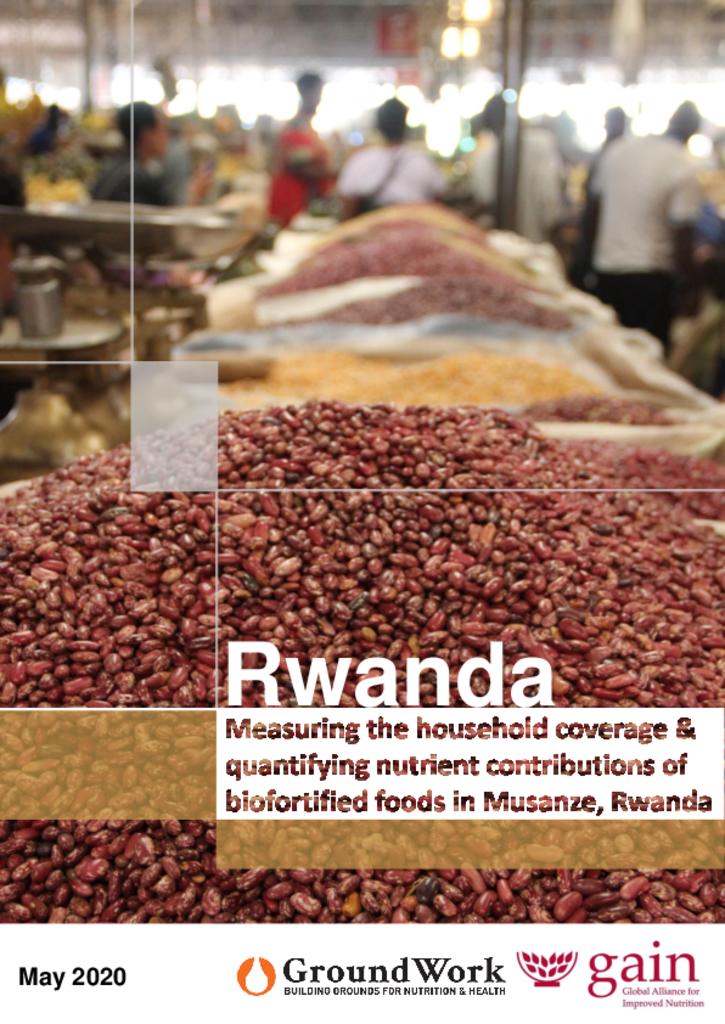Information on the coverage and consumption of biofortified foods is critical to assess the performance and potential for impact of programmes. The objective of this study was to develop and test methods for assessing the coverage and consumption of biofortified foods and their contribution to nutrient intakes of children (6-59 months of age) and women of reproductive age (15 to 49 years).
A cross-sectional household study was undertaken in 25 peri-urban and rural areas in the Musanze district in Rwanda. The study collected information on household demographics and accessibility, awareness, consumption and purchase of biofortified foods (high iron beans and orange fleshed sweet potatoes (OFSP)) and other foods that could potentially be biofortified (cassava and maize). We estimated household coverage of biofortified foods using the newly developed coverage indicators and individual-level consumption using the adult male equivalent method and nutrient contribution from the food (conventional or biofortified) based on the amount consumed and the nutrient level in the foods.
The results indicated that almost all surveyed households consumed beans and about 65% of the households had ever heard of biofortified beans. Despite high consumption of beans and awareness of biofortified beans, less than one-quarter of households knew where to buy biofortified beans and only about 15% ever consumed them. Based on visual expert analysis of bean samples collected from 85% of households, about 10% of households purchased biofortified beans the last time they had beans. For sweet potatoes, more than 95% of households reported consuming sweet potatoes, and about half of the households had ever heard of OFSP. Despite the relatively high awareness, only about 11% knew where to buy them, and about 10% of surveyed households reported ever consuming OFSP. With respect to the last purchase of sweet potatoes, only 2% reported purchasing OFSP.
These proposed methods and indicators fill a gap in the availability of tools to assess biofortification programme coverage and the results of the survey highlight their utility for assessing programme performance and identifying bottlenecks. Further testing is warranted to confirm the generalizability of the coverage indicators and inform their operationalization when deployed in different contexts.
For more information, refer here
